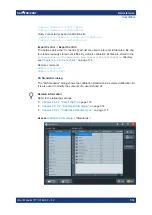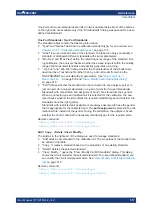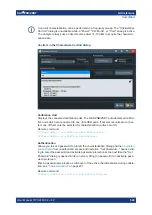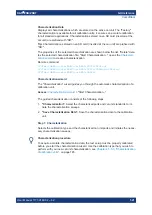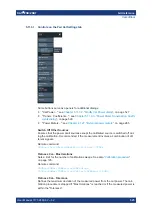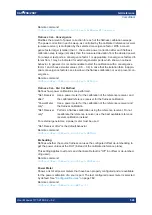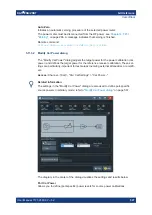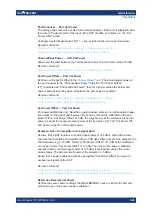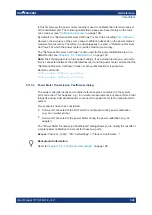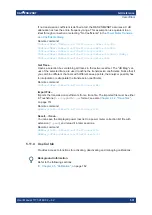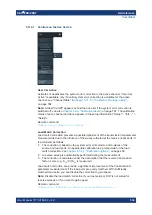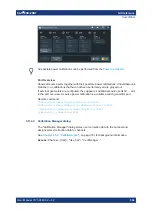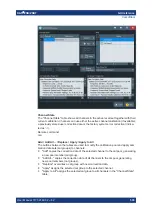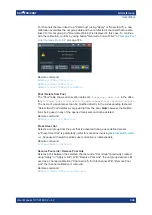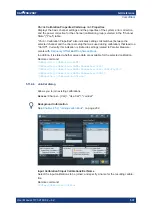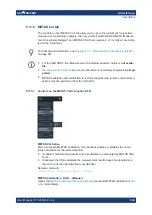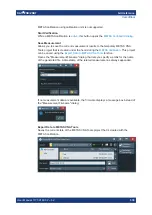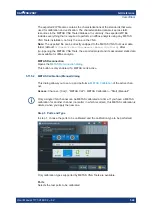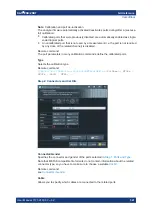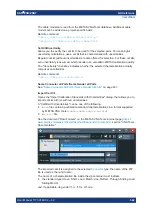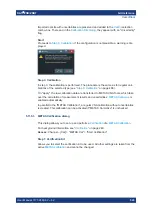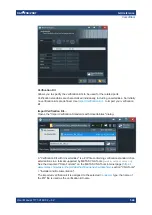
GUI reference
R&S
®
ZNB/ZNBT
529
User Manual 1173.9163.02 ─ 62
In this first sweep, the power meter reading is used to calibrate the reference receiver
of the calibrated port. The following calibration sweeps are based solely on the refer-
ence receiver (see
By default, the "Reference Receiver Cal Power" is set to the resulting
However, the accuracy of the source power calibration depends on the power meter's
measurement accuracy. Therefore it is advantageous to select a "Reference Receiver
Cal Power" at which the power meter provides maximum accuracy.
The "Reference Receiver Cal Power" is also used for the power calibration step in a
SMARTerCal; see
Note:
Risk of damage due to high power settings. If an external device (e.g. an ampli-
fier) is connected between the calibrated test port and the power meter, ensure that the
"Reference Receiver Cal Power" does not exceed its maximum input power.
Remote command:
SOURce:POWer:CORRection:PSELect
SOURce:POWer:CORRection:PPOWer
5.11.3.3
Power Meter Transmission Coefficients dialog
The power calibration is taken at another reference plane compared to the system
error correction. This happens, e.g., in on-wafer measurements, but also at more trivial
things like using a simple attenuator to connect the power meter to the measurement
system.
Two scenarios have to be considered:
●
A two-port connected to the DUT which is not present during power calibration
(e.g. an on-wafer probe)
●
A two-port connected to the power Meter during the power calibration (e.g. an
adapter)
The "Power Meter Transmission Coefficients" dialog allows you to modify the results of
a scalar power calibration to account for these two-ports.
Access:
Channel – [Cal] > "Pwr Cal Settings" > "Transm. Coefficients..."
Background information
Refer to
Chapter 4.5.6.4, "Extended test setups"
Cal softtool


